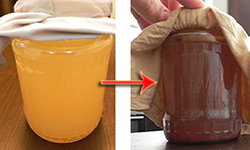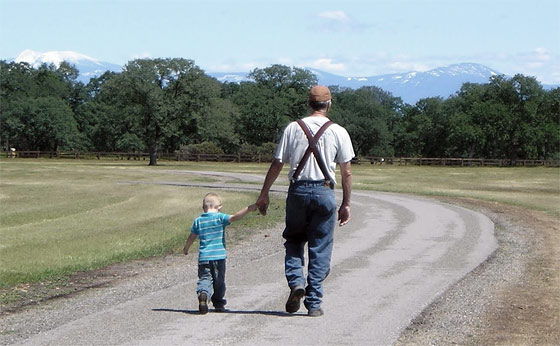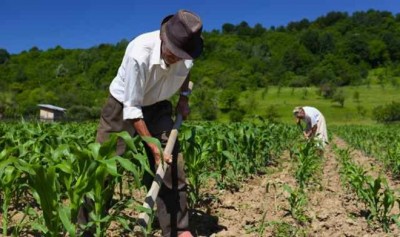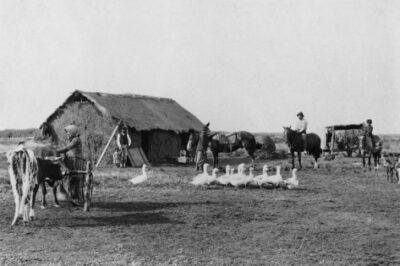
At approximately noon on February 25, 2015, the Internet went down in a wide swath ranging from just north of Phoenix stretching to Flagstaff, Arizona. Internet service was restored the following day around 1pm local time.
The very first reports I received about the outage, coming out of Wickenburg and Prescott, was that the ISP from Century Link went down because a car crashed into a transformer. Shortly after that, reports stated that a construction crew hit a power line causing Internet service to go down. From the Phoenix media, we now know that this was the work of “vandals” who discovered where cables, buried several feet underground,were located in the midst of rough terrain. These “vandals” subsequently cut through the Internet cables which were inches to a foot thick and this was the cause this massive outage.
The event had a crippling effect on local communities from central to northern Arizona.
-911 service and the communications of first responders were taken down.In short, businesses, schools and personal lives were totally disrupted. Yet, the national coverage afforded to this major event was negligible as I discovered after calling friends and colleagues from across the country to gauge their reaction. As of yesterday afternoon, most people had not heard about this event. I am not surprised as similar events transpired in both Florida and Oklahoma, AT THE SAME TIME! Steve Quayle shared the following email with me last night which described a similar event in Oklahoma:
-Point of sale debit/credit card transactions could not be initiated due to the outage.
-ATM’s did not work.
-Banks were not able to access their computers and were forced to issue paper receipts for any deposit.
-All cell phone providers were inoperable except for Verizon Wireless.
-Most cable companies were not able to carry programming (e.g. Phoenix TV stations) due to the takedown of live streaming. The same was also true for many radio stations.
Steve,Whatever hit Arizona on February 25th, also hit two other states at about the same time. This was a well-coordinated attack.
I just read with interest the Q Alert about phone and internet being out at mid-day from north Phoenix to Flagstaff yesterday. We dropped internet here in NW Oklahoma (outside Woodward) about mid-day yesterday as well. It happened twice, about an hour later for about 20 minutes at a time. No explanation was given by the provider (Pioneer Cellular and Internet). We have cell service, for which the data was messed up, but the towers were still operative.
About that same time, NOAA Space Weather lost data for several hours … complete blanks in their monitoring systems.
Interesting this is all going on about the same time the FCC was preparing to take over the internet.
Blessings!
Dane
The Key Word of the Day Is “Vandals”
The media has been very uniform in describing this act as the work of “vandals”.-Independent Channel 3 referred to the outage as the work ofFor those of us that have covered events such as this, we can often smell a cover-up when we see the repetitive use of a key word or phrase. In this case, the key word is “vandals”. In this instance, the implied use of the word “vandal” is designed to indicate that whomever attacked these cables, presumably owned by Century Link, were amateurs who were engaged in some kind of prank. As I investigated further, it became clear that this was a well-coordinated and well planned attack by persons with expertise related to the attack. Further, whomever did this had to have had specialized equipment to cut through these cables. The simple act of just finding where these cables also required specialized knowledge.
“vandals”.
-Phoenix CBS Channel 5 also used the word “vandals”.
-Phoenix Fox News, Channel 10, described this as the work of “vandals
-Phoenix NBC, Channel 12, said this Internet take down was perpetrated by “vandals”.
-Phoenix ABC, Channel 15, also used the word “vandals”.
-AZ Central, the website for the Arizona Republic used the word “vandals” to describe the origin of the attack.
-Even the BBC and Russia Today used the word “vandals”.
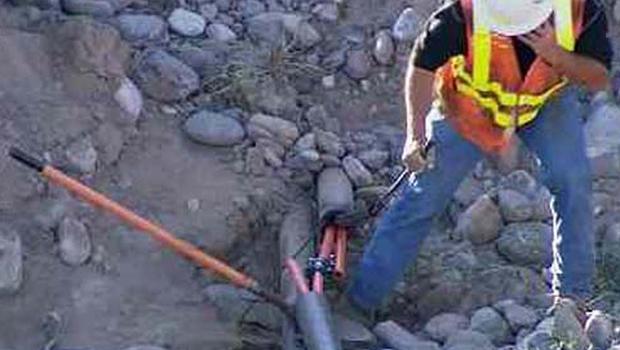
This was a very sophisticated operation in which these remotely located cables, in rough terrain were located and cut with precision. The getaway was effected without so much as leaving a clue and we are supposed to believe this was the work of “vandals.
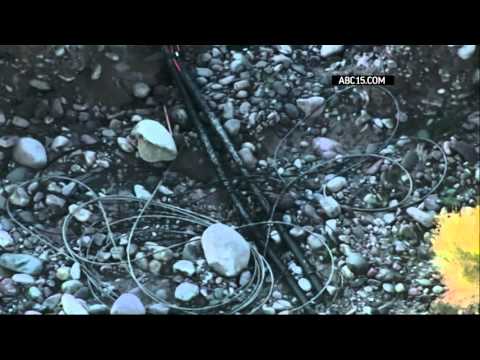
My Professional Contacts Weigh-In
This was also an “in-and-out-job” which left no clues and no traces. Amateurish “vandals” with nothing better to do did not take down the Internet in the manner described. That is also the opinion of several of my contacts who would be, or would have tasked with assisting in the investigation and the restoration of service.Nearly two decades ago, I was a Maricopa County Volunteer First Responder. I did so until DHS took control of the operation in 2002. As such, I received specialized training related to various forms of terrorist attacks and the likely response protocols to each attack. Subsequently, I developed many friendships and contacts in this business. Yesterday, I contacted a dozen of these people and I heard back from four. Two are still active and two are retired but still retain volunteer status related to their expertise. All five of us are unanimous in that this was not the work of vandals, this was an attack requiring inside information, specific training and and specialized equipment. Two of my contacts believed that this was a beta test performed by Muslim terrorists (e.g. ISIS). Two others thought this was a dry run rehearsal for a preemptive strike upon the grid on the eve of war (i.e. Russians and/or Chinese). Additionally, at briefings held by the FBI in 2005, two of the men stated that they were told if it was necessary to invoke martial law, they would take down all communications so dissidents targeted for arrest could not warn each other. Additionally, the Phoenix media is reporting that the Phoenix PD was in charge of investigating the vandalism. However, one of the four people I spoke with stated that DHS and the FBI were on the scene and were controlling the investigation. The Phoenix PD was releasing prepared media releases and were repeatedly using the word vandals.
Who’s Is Responsible?
I reside only seven miles south of the impacted area. I have learned from some locals that accessing the sight of the crime is not possible. Security personnel, without any identifying insignias, were in place and were turning unauthorized people back. I have been told that this was not a typical crime scene and until late yesterday afternoon, this had become a highly secure area.
As I contemplated the opinions of my fellow and former first responders, I have tried to determine who is correct and who was likely responsible and what was the motivation for the attack.

Grid EX II allowed Russians and Chinese military to participate in this simulated take down of the grid.
Fifteen months ago, I reported that, against all common sense, the Russians were being allowed to participate in the highly secure and classified Grid Ex II drills in November of 2013. Since this was the period of time that President Obama was attempting to justify the invasion of Syria, and Putin was threatening nuclear retaliation for doing so, I was among those who questioned the logic of allowing the Russians to learn the intricacies of power grid organization.
Nearly one month ago, I reported the depth and degree that the Obama administration had been penetrated by individuals with clear and undeniable connections to the Muslim Brotherhood along with their influence in DHS and the Fusion Threat Centers.
Two weeks ago, I reported that DHS has assumed control of all intelligence gathering information and this meant that operationalizing a mobilization effort to secretly arrest dissidents, under NDAA provisions (i.e. the Red List spoken of many times by Doug Hagmann and Steve Quayle), was now very likely based upon a hostility rating known as the “Threat Matrix Score”. I further reported that there are two programs designed to round up people who are viewed as a danger to the status quo. The two operations are labeled “Operation BOA”, as in boa constrictor, and “Operation Lightening Strike”. I have some operational details, but at this point they are still sketchy. Suffice it to say that Operation Lightening is the 3AM round up of all perceived dissident journalists and even some local politicians. This will be accomplished on a single night of terror. Operation BOA is a more deliberate process and will focus on more non-media threats such as outspoken veterans, gun rights activists, etc.Martial law will not be called martial law, it will be labeled as “Continuity of Government”. The announcement of the procedures designed to enhance the “Continuity of Government” policies will be made by a four star General from NORTHCOM. ”Let’s not forget that when was Janet Napolitano was leaving DHS she warned that attack upon the grid was not a matter of if, but when.
Napolitano did not issue this warning once, but twice before leaving DHS.
“A massive and “serious” cyber attack on the U.S. homeland is coming, and a natural disaster, the likes of which the nation has never seen is also likely and on its way.”
Outgoing DHS Director, Janet Napolitano, August 27, 2013
In seeming unrelated actions, yesterday, the Obama administration enacted two more unconstitutional Obama decrees: (1) Obama is using executive actions to impose gun control on the nation, targeting the top-selling rifle in the country, the AR-15 style semi-automatic, with a ban on 5.56mm ammo on a fast track, immediately driving up the price of the bullets; (2) The FCC took complete control over the Internet (private citizen communication) yesterday. The first action is clearly a move to remove citizens ability to defend themselves against the forces of tyranny at some future date. The second move is designed to cut off the head of the Patriot movement and severely impair communications. These are both martial law related actions.
Connecting the Dots
Both Steve Quayle and I agree that we witnessing the introduction of the “Red List” strategy. What happened in Arizona, Florida and Oklahoma was a martial law preparation beta test designed to simultaneously take down communications. Why would DHS want to take down communications? When the Red List roundups begin under Operation Lightening Strike, the powers that be do not want to allow their intended round up targets to be able to warn each other. Further, the crash of the ATM’s and point of sale transactions limits one’s ability to go on the run.How do Russians factor into this? We know from surveys done by various organization (29 Palms military base) that American troops cannot be counted on to fire upon American citizens. Therefore, the Army manuals pertaining to FEMA camps call for the use of foreign assets. This would be the Russian troops that I have repeatedly reported are in the US training on American soil for martial law implementation. Why do you think they were allowed to participate in the Grid Ex II war games?
Conclusion
What happened over three state region was not the actions of “vandals”. This was a highly coordinate and sophisticated attack upon certain aspects of our grid designed to take down communications and commerce. I suspect that Russian Spetsnaz were the boots on the ground for this beta test in preparation for martial law. The only question which truly remains is how far away are we from complete implementation of this operation?


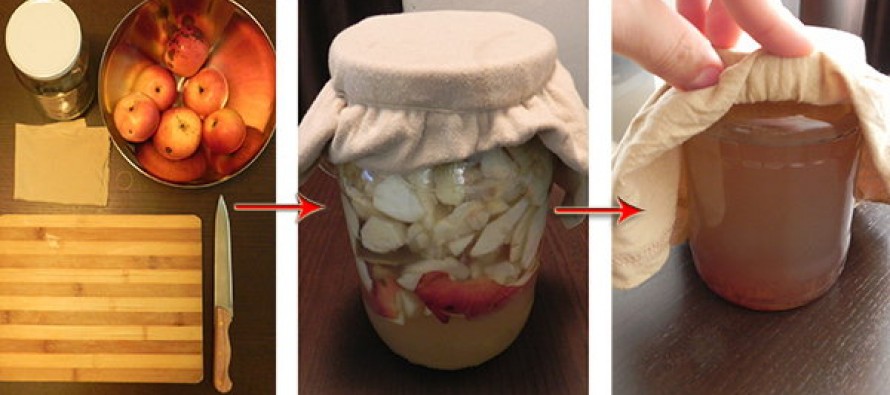
 You’ll need:
You’ll need: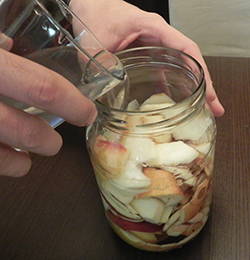 Peel the apples and fill you container by at least half way with your apple scraps (peels & cores), seed, stems and all. If at least half the container is not filled, add additional apple scraps until you achieve this level as a minimum.
Peel the apples and fill you container by at least half way with your apple scraps (peels & cores), seed, stems and all. If at least half the container is not filled, add additional apple scraps until you achieve this level as a minimum.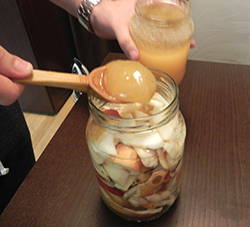 Stir in the raw honey or cane sugar until fully dissolved.
Stir in the raw honey or cane sugar until fully dissolved. Cover the top of the glass jar with cheesecloth, a thin white dishtowel or floursack cloth and secure with a large rubber band.
Cover the top of the glass jar with cheesecloth, a thin white dishtowel or floursack cloth and secure with a large rubber band.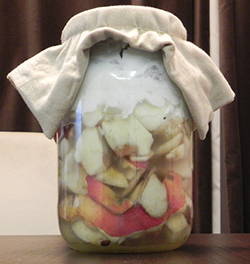 Leave on the counter for about 1 week.
Leave on the counter for about 1 week.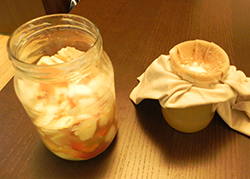 Strain out the apple scraps and pour the hard apple cider into another glass jar.
Strain out the apple scraps and pour the hard apple cider into another glass jar.